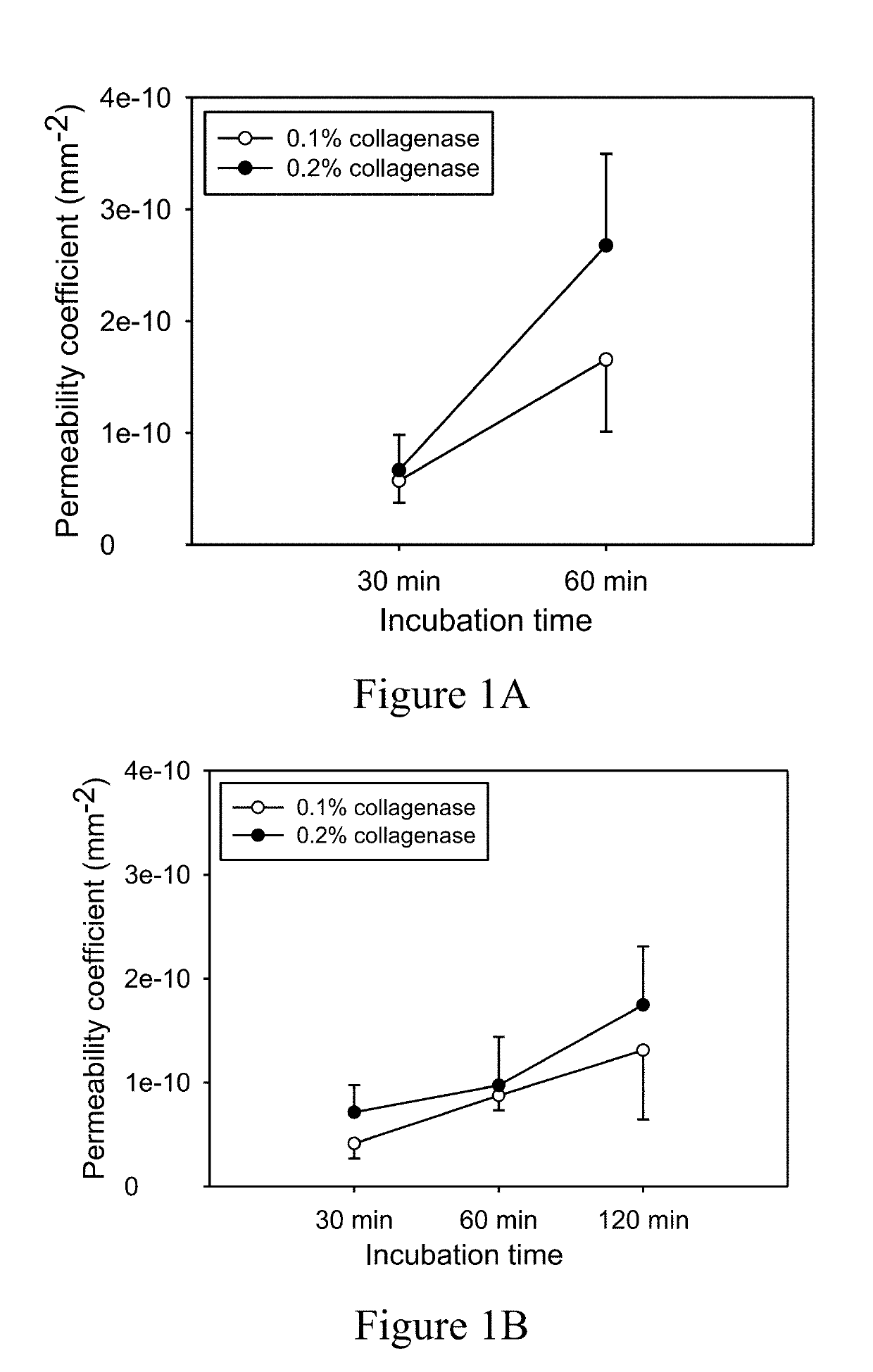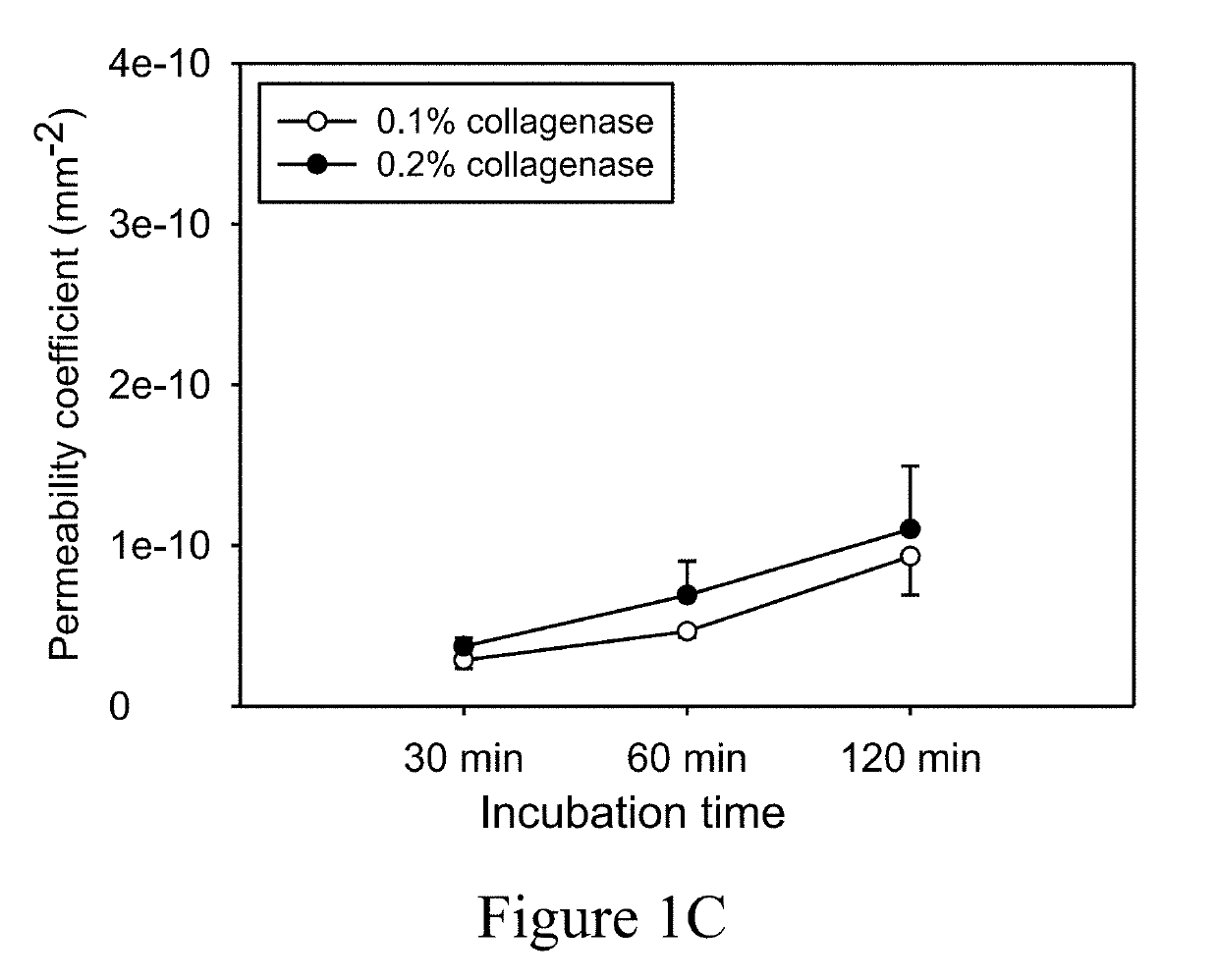Bioscaffold, method for producing the same, and uses thereof
a bioscaffold and cell-free technology, applied in the field of tissue engineering, can solve the problems of limiting the application of thus produced biological scaffolds in tissue regeneration, and none of the above-mentioned methods alone is capable of producing a cell-free bioscaffold, so as to reduce the fluidity of the digestion buffer, restrict digestion, and increase the viscosity
- Summary
- Abstract
- Description
- Claims
- Application Information
AI Technical Summary
Benefits of technology
Problems solved by technology
Method used
Image
Examples
example 1 preparation
and Characterization of Decellularized HUAs
[0100]1.1 Preparation of Adventitia-Free HUAs
[0101]To remove the lining tissue of HUAs, the HUAs were subjected to the treatment of collagenase solution of low, moderate or high viscosity for 30, 60 or 120 minutes as descried in “Materials and Methods” section, and the effect of the treatment was evaluated by measuring the permeability of the collagenase-treated HUAs. Results were illustrated in FIGS. 1A-1C.
[0102]It was found that immersing the HUAs in 0.1% or 0.2% (w / v) collagenase solution of low viscosity significantly damaged the structure of the vessel wall, rendering the vessel highly water permeable (FIG. 1A). For the HUAs treated with 0.1% or 0.2% (w / v) collagenase solution of moderate viscosity, the value of permeability increased with an increase in the collagenase concentration or treatment time (FIG. 1B). Nevertheless, treating the HUAs with 0.2% (w / v) collagenase solution of high viscosity for 60 minutes more consistently produ...
example 2
[0117]To investigate the efficacy of the decellularized HUAs of example 1 as a bioscaffold, the HUAs were implanted subcutaneously or intraperitoneally in animals as described in the “Materials and Methods” section. Short segments of the HUAs with the intact adventitia that were decellularized by immersing in 1% SDS solution with simple agitation served as the control. Results were illustrated in FIGS. 8 to 11.
[0118]FIGS. 8A and 8B are photographs of the histological staining of the decellularized HUAs taken after being implanted for 1 week (panels a and b), 2 week (panels c and d), or 4 weeks (panels e and f) in the subcutaneous space. Cells were found to stay in the outer area of the vessel in the sections of the decellularized HUAs having the intact adventitia, and tissue degradation was found at 4 weeks post-implantation. For the sections of the decellularized HUAs having the adventitia removed, cells were found in the exterior of the vessel at first wee...
PUM
| Property | Measurement | Unit |
|---|---|---|
| viscosity | aaaaa | aaaaa |
| kinematic viscosity | aaaaa | aaaaa |
| absolute viscosity | aaaaa | aaaaa |
Abstract
Description
Claims
Application Information
 Login to View More
Login to View More - R&D
- Intellectual Property
- Life Sciences
- Materials
- Tech Scout
- Unparalleled Data Quality
- Higher Quality Content
- 60% Fewer Hallucinations
Browse by: Latest US Patents, China's latest patents, Technical Efficacy Thesaurus, Application Domain, Technology Topic, Popular Technical Reports.
© 2025 PatSnap. All rights reserved.Legal|Privacy policy|Modern Slavery Act Transparency Statement|Sitemap|About US| Contact US: help@patsnap.com



